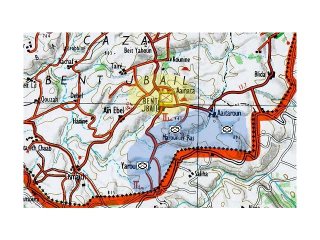Israel Defense Forces troops pulled out of the southern Lebanon town of Bint Jbail on Saturday afternoon ... Armored Corps soldiers were still operating around the town, and were in control of certain areas.
This seems to indicate that the IDF is withdrawing from the urban terrain of the city, but remaining perched on the hills to the east, west, and south. The Jerusalem Post reports that the bulk of the forces are redeploying to hit other villages and cities close to the border. Israel has talked about creating a shallow zone in Lebanon for security purposes, but the IDF hasn't had a substantial presence anywhere else in Lebanon. The call up of three more divisions could be to provide enough manpower to accomplish that objective.
The movements of the IDF at first glance would imply that Israel does not plan to use ground troops to deny Hezbollah missile launching sites south of the Litani river. It could also be that this was some sort of probing attack, trying to take measure of just what they were up against in terms of Hezbollah's capabilities and they are planning to go the Litani through a different route.
Any observer, however, must note that Israel has not achieved any of her objectives that she has gone to war for. The IDF has not prevented Hezbollah from launching rockets into northern Israel, nor have they recovered their captured soldiers. Israel's strategy still seems to be to engage the enemy at arms length and avoid any kind of attrition on the ground. Air power still seems to be the tool of choice in suppressing rocket fire, but it is limited in that it can only react most of the time after a launch has revealed its target. Hezbollah, never discounting the efficacy of propaganda, is crowing that, in inflicting eight casualties in a single battle, that they have hit the Achilles heel of the IDF, casualties. From MEMRI via Pajamas Media:
"In the ground war, we will have the upper hand. In the ground war, the criterion is our attrition of the enemy, rather than what territory does or does not remain in our hands, because we are not fighting with the method of a regular army. We will definitely regain any land occupied by the enemy, after inflicting great losses upon it."
Where then, are things going to go from here?
With Secretary Rice returning to the region, it would appear that a negotiated ceasefire and settlement could be in the works. It could also be that the IDF is merely planning for a much deeper penetration of Lebanese territory and has temporarily pulled back to prepare. More information should be forthcoming over the next few days.

